MO Tested: Pirelli Diablo Rosso IV Review

Improved sporting performance and durability
I know I’ve written many times that the advancement in motorcycle tire technology in the past decade is staggering, but the statement is – and continues to be – quite true. Case-in-point, I’ve spent the last couple of months putting about 2,500 miles on my 2019 KTM 790 Duke shod with a set of Pirelli Diablo Rosso IV tires. In those miles I’ve used the bike as I normally would: short urban rides, occasional freeway jaunts, frequent weekend canyon rides, and even a track day. As such, I feel I can now adequately address the characteristics, usability, and longevity of these tires. Essentially, I used these tires for the tasks for which they were designed. (Unfortunately, as is typical in Southern California during the summer, I did not get to conduct any wet weather testing.)
Internal and exterior improvements
Pirelli’s Diablo Rosso IV tires are the update to the already popular (and formidable on the street) Pirelli Diablo Rosso IIIs. Naturally, we’d expect them to be designed to surpass the III’s capabilities in one or more key areas. With the target market being supersport, naked, and crossover motorcycles destined for sporting road use, the primary thrusts of the update were directed towards the street, not the track. Pirelli’s stated goal for the Rosso IV was to deliver “the best performance on road use, on wet and dry road.” Pirelli describes the Rosso IV’s ideal owner as being user of sporting machinery who love to attack winding roads. These are primarily weekend riders who prefer high-performance jaunts and medium-distance sport touring in all kinds of weather but still want a tire capable of sticking when the roads get twisty.
For improved grip, Pirelli’s engineers adjusted the front tire’s profile and construction. Starting with the profile and using information gathered from its time as the official tire of World Superbike, the engineers created a multi-radius front carcass, giving the tread center a sharper profile to make turn-in quicker. Once leaned over, the curve of the profile becomes more gradual to increase the contact patch for improved traction. When combined with the new tread pattern, while retaining the signature flash pattern, Pirelli has optimized the placement of the grooves, reducing the void/fill ratio by 30% compared to the Rosso III. Once the tire is leaned over more than 35°, it essentially becomes a slick since lean angles of that degree do not occur in the rain. Because the front tire does most of the water-displacement work in the rain, the rear tire actually has the void/fill ratio reduced without compromising wet weather grip, which Pirelli claims improves both wear characteristics and high-speed stability.
The construction of the Rosso IV underwent some major revisions, too. If we stick to the exterior for now, the tread compounds of both the front and rear were updated. The front is divided into three sections, with the center section covering a full 50% of the tread width. Since this section of the tire is subjected to everything from the wear of extended straight up and down riding to the high forces generated by braking, a wear-resistant, full-silica compound adds to the tire’s durability in the areas where street motorcycles spend most of their time. Once leaned over more than 35°, a softer compound takes over. This full-silica compound offers higher grip and quick warm up, even at lower temperatures.
Diablo Rosso IV rear tires also feature multi-compound construction, but there are two variations, each with its own construction and characteristics. First, for rear sizes up to 190/50-17, a two-compound, three zone tread is utilized. (This is the version I tested on my KTM 790 Duke with its 180/55-17 rear.) The harder center compound is exposed in the middle section of the tire and serves as the base layer for the softer sections on the sides, a construction Pirelli calls Cap&Base. This center section resists the type of wear that many sport-focused tires ultimately suffer from, namely squaring off in the center from typical street use. Additionally, Pirelli claims that this full-silica center delivers quick warm up, with the base portion contributing to “optimal thermal balance” through the entire profile of the tire. On the sides of the tires, the compound that covers (or caps) the base compound is a softer silica blend that was developed specifically for the Rosso IV and offers “the grip of a racing product,” according to Pirelli. The result of this construction is an increase of the temperature range the tire is able to handle.
The second variation of the Diablo Rosso IV rear tire was created to handle the massive power output (particularly when accelerating out of corners) of current generation superbikes and super nakeds. To survive this task, a tread with five zones was necessary. As with the front center and previous rear center section, the middle compound is of full silica for quick warmup, high mileage (for a sporting tire), and wet weather chemical grip. This center section also provides high-speed stability. Each side is divided into two compounds: a softer full-silica intermediate compound for chemical grip in both wet and dry conditions at middling lean angles and a 100% carbon black shoulder compound that can trace its lineage to the Diablo Supercorsa SC3 in endurance trim. Again, the Cap&Base construction contributes to the thermal stability under loads, allowing the tire to stick under extreme acceleration loads.
Digging deeper
Pirelli says the Diablo Rosso IV uses an internal structure derived from its racing tires. This incorporates a zero-degree steel belt over the top of Rayon cords, which Pirelli claims are more rigid than the Rosso III’s construction while being distributed in the carcass at a 20% lower density. The wider spacing between cords “leaves more room for the rubber compound, which improves riding feeling and precision thanks to its damping properties.”
As with the tread compounds, there are two versions of the interior structure. Rear sizes up to 190/50-17 use Rayon construction that is stiffer than the Rosso III’s, and Pirelli says that the construction, again, “leaves more room for the rubber compound to better adjust the tire stiffness along its profile” in a similar way that the new construction does with the front tire. At 195/55-17 and above, three-stranded Lyocell cords are used to significantly lower the “deformation ratio” compared to other street-going tires. The result is a better resistance to the loads generated on corner entry and during hard acceleration. According to Pirelli, this construction is a direct result of the knowledge gained from its time as the official tire in the World Superbike Championship, where it has been the spec tire since 2004. Eventually, racing technologies trickle down in some form to the street, and we all benefit.
Life on the street (and track)
As I said at the beginning of this review, I set out to use the Pirelli Rosso IVs in the manner for which they were designed, namely extensive street use, with an emphasis on sport riding in the mountains, plus the occasional track day. Additionally, I rode the bike around town and on the freeway a bit. After 2,500 miles, the tires look like they have about another 1,000 miles left in them if they continue to wear at the same rate. This would place them squarely in the same range as the Bridgestone S22 tires that I ran a few sets of prior to mounting the Rosso IVs.
Riding on the street with the Rosso IVs highlights what a good job Pirelli did when designing the tires. Turn in is light and immediate. When compared to the S22s I had previously, the effort is slightly lower to initiate turns or transition back-and-forth through S-bends. Once leaned over, the Rosso IVs, like any sporting rubber worth its salt, are stable and accept mid-corner corrections without issues. The same can be said about trail braking. I always felt that I knew what was going on at the front contact patch, and I was quite comfortable carrying the brakes well into decreasing radius corners. Since my bike isn’t super powerful and since I rarely go above 80 mph when sport riding on the street, I don’t have a lot to say about how the rear handles acceleration. That’s something that I save for the track.
Although I did run the Rosso IVs at the track, I feel that I should emphasize that the Horse Thief Mile is a highly technical, relatively low-speed track with 13 turns in its one mile length. So, I’m pretty sure that, had I ridden on a longer, higher-speed track, the wear would have been significantly greater since long, fast corners (and the heat they generate) are tougher on tires – particularly tires designed primarily for street use.
When it comes to track days, I’m an A Group rider who gets passed quite frequently on the straights (given my lower top speed on the 790 Duke) and mostly hangs with faster guys in the corners until they get on the gas again. That said, I’m neither a demon on the brakes nor whacking the throttle wide open and letting the TC sort things out. I value smooth riding. On a typical track day, I will only see the TC light flash a handful of times. So, I’m not a serial abuser of rear tires, and the Rosso IV held up quite well during my stints on a closed course.
At this point, I would say that the Rosso IVs have enough tread left for a track day on the Horse Thief Mile or similar venue, but if I were going to someplace faster, like Buttonwillow Raceway, I’d replace the tires despite the fact that they still have some life left in them.
Pirelli Diablo Rosso IV Tire Sizes | |
| Front | 10/70 ZR 17 M/C 54W TL |
| 110/70 R 17 M/C 54H TL | |
| 120/60 ZR 17 M/C (55W) TL | |
| 120/70 ZR 17 M/C (58W) TL | |
| Rear | 140/70 R 17 M/C 66H TL |
| 150/60 ZR 17 M/C 66W TL | |
| 150/60 R 17 M/C 66H TL | |
| 160/60 ZR 17 M/C (69W) TL | |
| 180/55 ZR 17 M/C (73W) TL | |
| 180/60 ZR 17 M/C (75W) TL | |
| 190/50 ZR 17 M/C (73W) TL | |
| 190/55 ZR 17 M/C (75W) TL | |
| 200/55 ZR 17 M/C (78W) TL | |
| 200/60 ZR 17 M/C (80W) TL | |
After 2,500 miles on the Pirelli Rosso IV tires, I am quite happy with how they performed and how they wore compared to similar premium street rubber (think Bridgestone S22, Metzeler Sportec M9RR, and Michelin Power 5). The defining characteristic of the tires was the effortless turn in and ease of changing lines without sacrificing mid-corner stability. Although the list price for the front 120/70-17 is $198, you can find it cheaper if you look. The rear retail pricing starts at $246 and tops out at $343, but again, bargains can be found. For comparison, the sizes that I run on my 790 Duke front/rear retail for $198/$253, respectively. The Bridgestone S22 tires I has mounted previously listed for $211/$226. So, they are in the same zip code, price-wise.
Although it may seem strange to say this about sporting tires, I’m a bargain shopper when I need new rubber, and I typically have a couple of tires that I’ll watch prices on. It’s not unusual for me to buy tires when they are on sale or have a rebate available, regardless of whether I’m completely ready to swap tires on my Duke. After all, track days consume rubber much faster than just street riding, and it’s nice to have fresh buns standing by should the need arise. With the release of the Pirelli Diablo Rosso IV, I have a new tire at the top of my watch list for street use. Go ahead and give a set a try.
| + ProsExcellent turn-inRear tire construction varied for tire size and bike power outputImproved wear compared to Rosso IIIs | – ConsCosts commensurate with other premium sporting tiresWhile improved, performance tires still don’t wear as well as sport-touring tires (but they stick better if you need it)Limited rear size options compared to other brands |
Pirelli Diablo Rosso IV FAQ
Are Pirelli Diablo Rosso III tires still available?
Yes, the Pirelli Diablo Rosso III are still available at a slightly lower cost than the Rosso IVs. So, you can save a bit of money with the previous generation if you were happy with them in the past.
Are Pirelli motorcycle tires good?
Pirelli is considered to be one of the premium motorcycle tire manufacturers and produces a wide variety of tires to fit most of the bikes manufactured today. For riders interested in sporting rubber, Pirelli is the official tire manufacturer in all classes of the World Superbike series up to, and including, the 2023 season. So, that should tell you something about their quality. The fact that Pirelli has sold over 5 million tires from the Diablo family since its introduction in 2008 should tell you a lot about their quality and popularity.
Are Pirelli motorcycle tires expensive?
Being a manufacturer of premium motorcycle tires, Pirelli charges more than some brands, but as with any of the top tier of tire manufacturers, the performance delivered by the tires vastly exceeds that of bargain rubber.
Additional Resources
Burning Rubber: Best Sportbike Tires
Best Motorcycle Racing Tires You Can Also Use On The Street
Sport Touring Tire Buyer’s Guide
We are committed to finding, researching, and recommending the best products. We earn commissions from purchases you make using the retail links in our product reviews. Learn more about how this works.
Become a Motorcycle.com insider. Get the latest motorcycle news first by subscribing to our newsletter here.

Like most of the best happenings in his life, Evans stumbled into his motojournalism career. While on his way to a planned life in academia, he applied for a job at a motorcycle magazine, thinking he’d get the opportunity to write some freelance articles. Instead, he was offered a full-time job in which he discovered he could actually get paid to ride other people’s motorcycles – and he’s never looked back. Over the 25 years he’s been in the motorcycle industry, Evans has written two books, 101 Sportbike Performance Projects and How to Modify Your Metric Cruiser, and has ridden just about every production motorcycle manufactured. Evans has a deep love of motorcycles and believes they are a force for good in the world.
More by Evans Brasfield



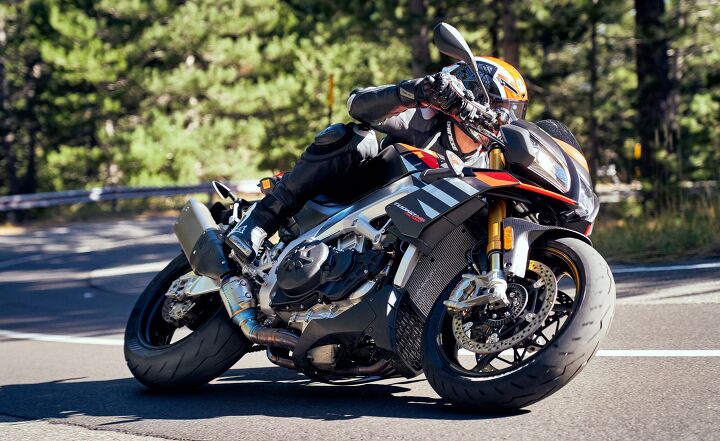
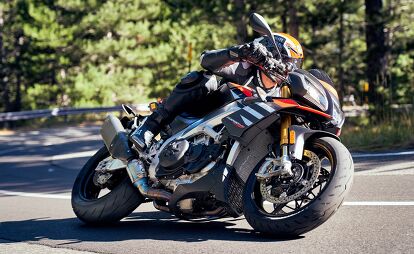























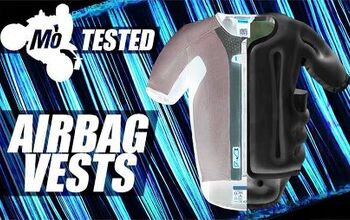
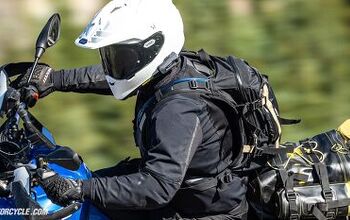
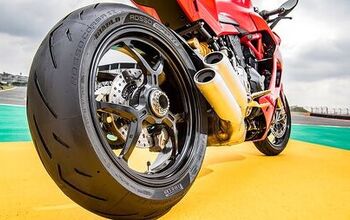
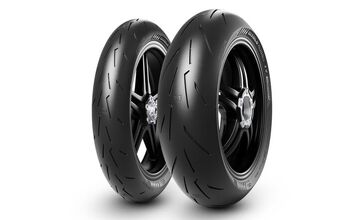
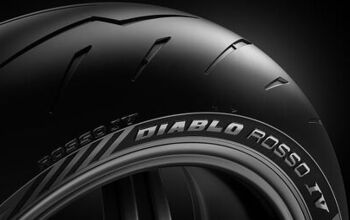
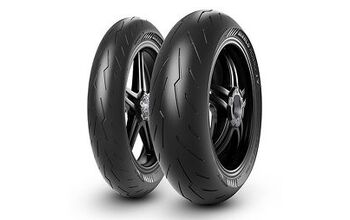

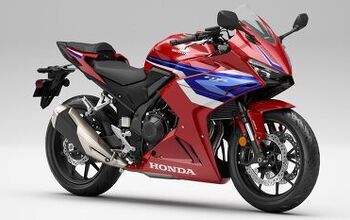


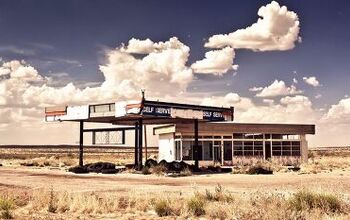




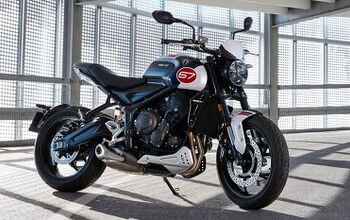


Comments
Join the conversation
What I want to know is when will they bring back the calendars....(Boomer thing)
Thank you for a diligent and informative review.
You nailed all the stuff I wanted to know, especially: